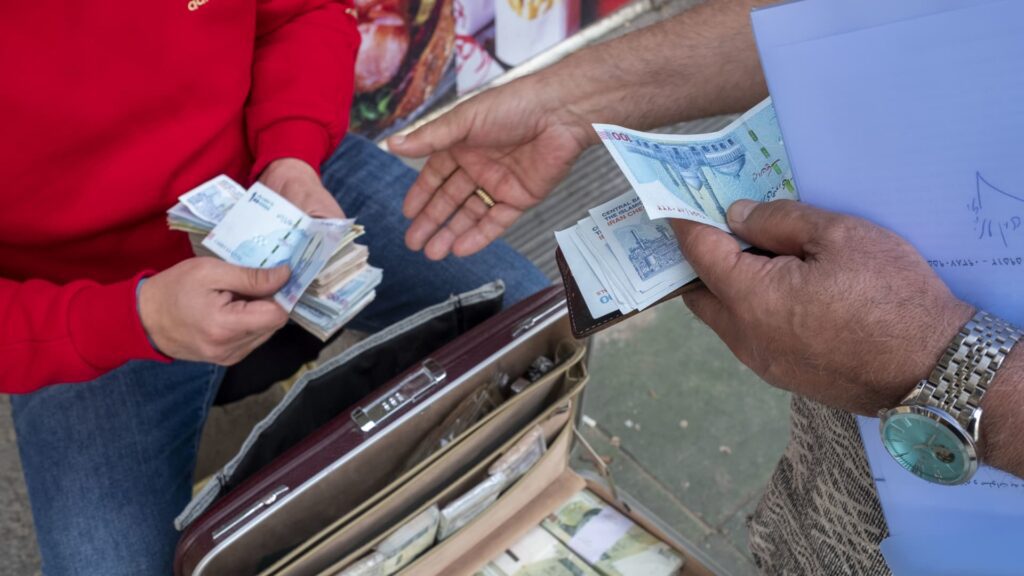Two men carry Iranian banknotes on the sidewalk in Tehran's commercial district, in Tehran, Iran, on April 13, 2024.
norphoto | norphoto | Getty Images
Iran's currency, the rial, briefly fell to a record low against the dollar on the unofficial market, after Tehran launched an expanded missile and drone attack on Israel on Saturday evening, exacerbating tensions in the Middle East.
The exchange rate reached 705,000 rials/dollar on the open market around 10:30 a.m. local time on Sunday, according to data from foreign exchange monitoring website Bonbast. Since then, the Iranian currency has trimmed some losses.
The government set an official exchange rate of 42 thousand riyals/dollar in 2018.
The rial's decline came hours after Iran deployed a massive drone and missile attack against Israel on Saturday night, in response to a suspected Israeli raid that killed several senior Iranian leaders in Damascus earlier this month.
Israel said it identified 300 “threats of various kinds” and eliminated “99%” of those heading to Israeli territory as part of Saturday’s attack, which US President Joe Biden described as “unprecedented” and “brazen.”
This development represents the first direct attack on Israel from Iranian territory, and Tehran now faces the risk of being subjected to further trade and diplomatic restrictions.
The Iranian rial is already facing pressure from high inflation fueled by ongoing US sanctions implemented during the Donald Trump administration, which have also reduced sales of some of Tehran's main exports – crude oil and petroleum products.
Israel called for an emergency meeting of the UN Security Council regarding Saturday's attack, while Biden requested a G7 meeting on Sunday.
